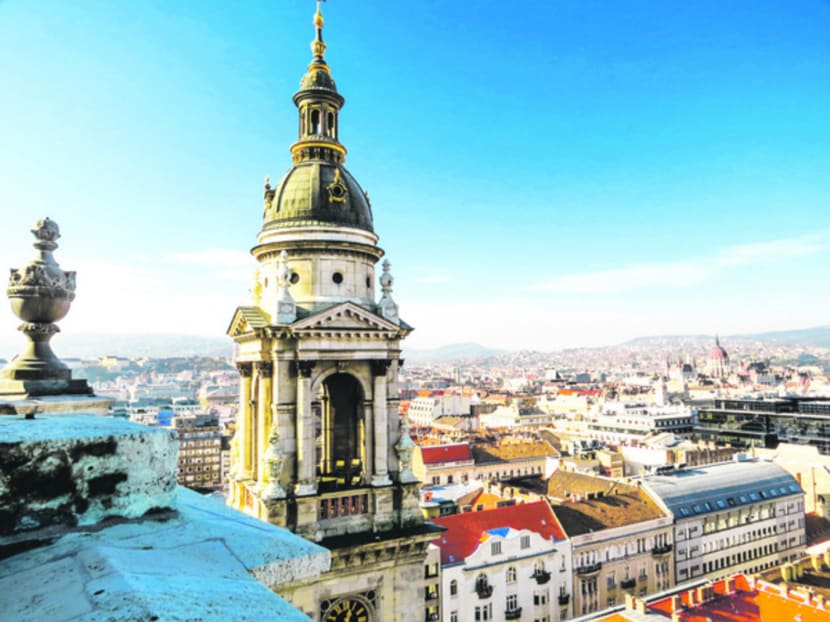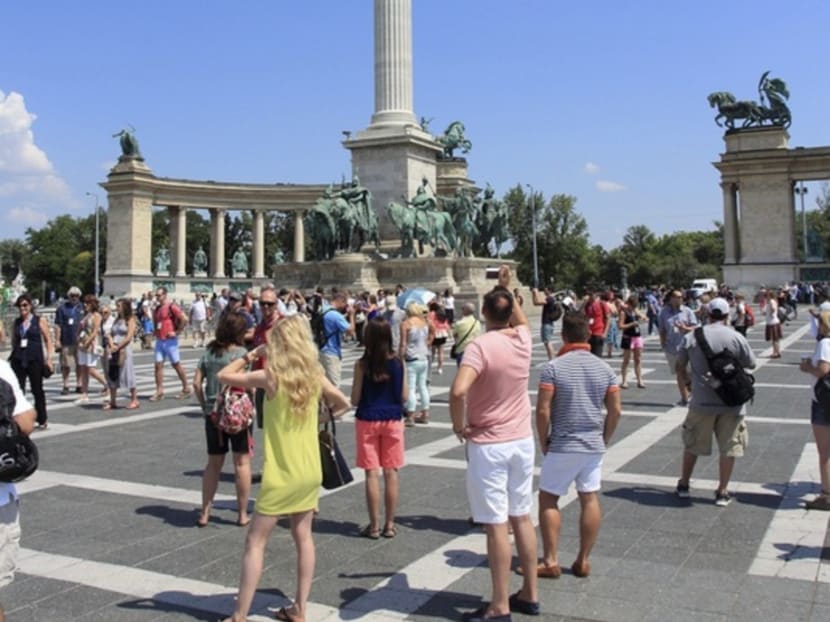The Budapest story: Europe’s hidden treasure chest
BUDAPEST — Barrels have long been used by winemakers as containers to age wines. However, during World War II, some Hungarian winemakers found another use for them: Hiding their Jewish friends from the Nazi threat — which was what Konrad Schieszl’s grandfather did.


BUDAPEST — Barrels have long been used by winemakers as containers to age wines. However, during World War II, some Hungarian winemakers found another use for them: Hiding their Jewish friends from the Nazi threat — which was what Konrad Schieszl’s grandfather did.
We were at Schieszl’s restaurant, Schieszl Vendeglo es Borhaz, in Budapest, listening to Schieszl regale us with tales of what his grandfather — also called Konrad — did during the war.
“My late grandfather insisted on helping his best friend, who happened to be Jewish, along with his best friend’s young family,” he said. “They survived the horrors of the Holocaust by secretly hiding inside the large wine barrels, which we stored in the cellar of our family restaurant. If the Nazis had discovered them, punishment would have been a cruel and painful death,” he intoned before asking everyone to raise their glasses: “So tonight, let us all drink to friendship.”
New friends were certainly made at Schieszl’s bustling restaurant, which was founded in 1896 by Schieszl’s grandfather. The genial restaurateur is one of the engaging locals who have specially opened up their homes and family establishments to wide-eyed tourists like us as part of Trafalgar’s Be My Guest dinner experience.
The Be My Guest initiative was started to enable travellers to get the most out of their vacation experience, Gavin Tollman, chief executive officer of Trafalgar Tours, previously told TODAY.
“We want to take you below the surface, not just skimming through. Travel enriches you and you get to understand more about the people and why the destination is the way it is,” Tollman said. “Sometimes, the best-kept secrets are just right around the corner, but you won’t know about it unless someone tells you.”
He couldn’t have said it better: Wandering around the grounds, I chanced upon what I initially thought was a large round doorway, but was actually a door frame cleverly fashioned from a single giant wine barrel. Tracing the natural burls in its heavy, curved oak frame, I could not help but wonder if this was the same wine barrel Schieszl had told us about. It was certainly big enough to fit a small family.
This was just one of the many hidden gems Budapest has to offer to the discerning traveller. Although I did not have much time in the city — it was the first of a three-city trip — I still managed to uncover some treasures.
For instance, our savvy travel director, Malcolm Macrae, had urged us to check out the grand New York Kavehaz (New York Cafe) located near our hotel. And no wonder: Lunching at the long-time centre for Hungarian literature and poetry (it opened in 1894) was a surreal experience — akin to having your beef goulash in the middle of an opulent museum gallery, with gold gilded statues and impressive frescoes surrounding you as you sup.
Also, a morning walk in the epochal Castle District was made all the more refreshing, thanks to the friendly locals who peddled their handmade wares on the scenic streets of Buda. And let’s not forget the city’s UNESCO World Heritage sites such as the Buda Castle District, Heroes’ Square (along with its surroundings), and Andrassy Avenue (with the Millenium Underground Railway — which was built before the last millennium in 1896).
Yes, the national capital of Hungary is a beautiful city. But for all its striking European architecture and heritage sites, it is more than a place for sightseeing tourists looking for pretty selfies and bragging rights.
Budapest is also replete with stories — whether they are of Celtic legends or epic battles with Mongols or tales of surviving the harrowing adversity during Second World War. And these stories have lived through her people.
Schieszl, for example, shared how his family’s restaurant and ancestral land had been forcibly taken away from them during the Nazi occupation and his family fought hard to get it all back. Then, in 1946, Schieszl’s grandfather was deported and the property was given to his son, Schieszl’s father, Sebestyen.
Although he was to carry on the family tradition, it proved to be too huge a task. And it was only in 1970 when the place could reopen again. “It was very difficult, building our lives up all over again,” said Schieszl.
As we sipped his wine, the dark tints reminded me of the ragged burgundy cloak worn by an old Jewish woman I saw earlier that afternoon at Europe’s largest Jewish temple, the Dohany Street Synagogue. Also known as The Great Synagogue, most of its iconic structure had to be rebuilt after the original building was badly destroyed during World War II.
All alone and wrapped in quiet solitude, the elderly woman sat on the stone bench and faced the unmarked graves in the synagogue’s garden cemetery. Her white hair was wispy like the clouds above us and her heavy silence moved me. We couldn’t understand each other, but I can only imagine how painful it must have been, for those like her, who were left to pick up the pieces after the war ended.
But perhaps that’s why people like Schieszl often take heart in the little things, such as the sweet treat Turo Rudi, which he said was “a nostalgic and well-loved candy from here”.
“While I was growing up, it was a source of great comfort in my childhood during those difficult times,” he said, offering me one to try. “I wish to share this piece of happiness with you too.”
Crunching down into the thin outer crisp of chocolate, I was greeted with a soft pillowy surprise of sweet cottage cheese that effortlessly crumbled and melted on my tongue. Relishing the delightful confectionary in my mouth, it made me think about how that treat was, in a way, pretty much like Budapest.
Like the candy, the city is a destination best appreciated by those who dare to fall in love with it and recognise that her beauty can sometimes come from the least expected of places. All you need to do is bite into its outer crust.
This trip was made possible by Trafalgar Tours (http://www.trafalgar.com).





